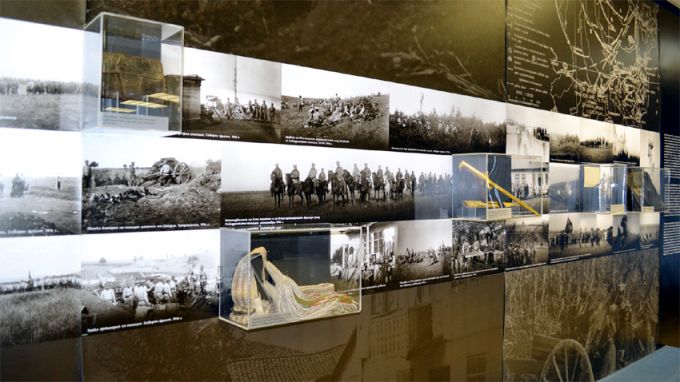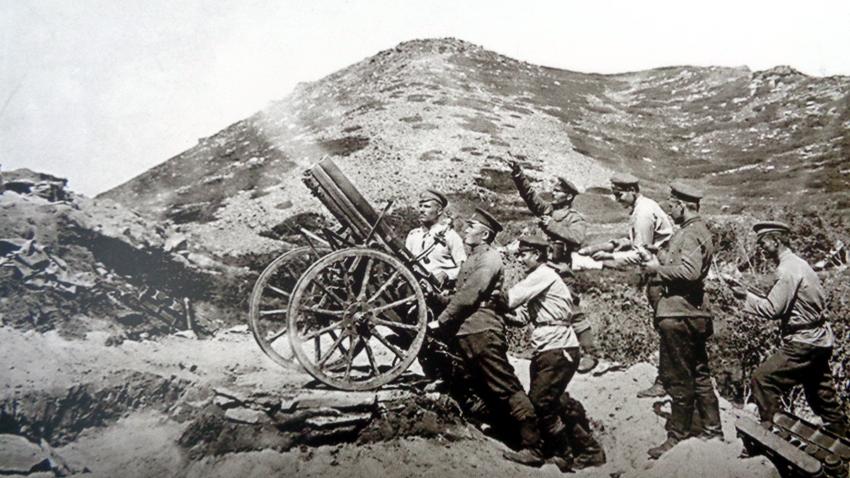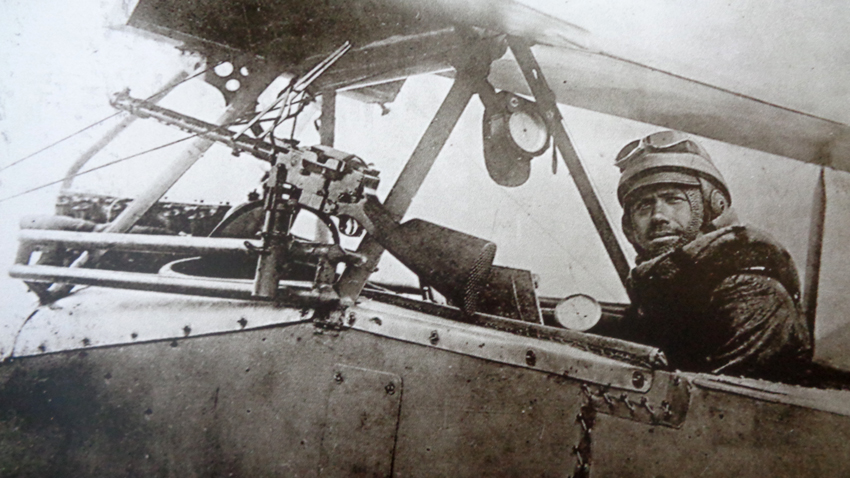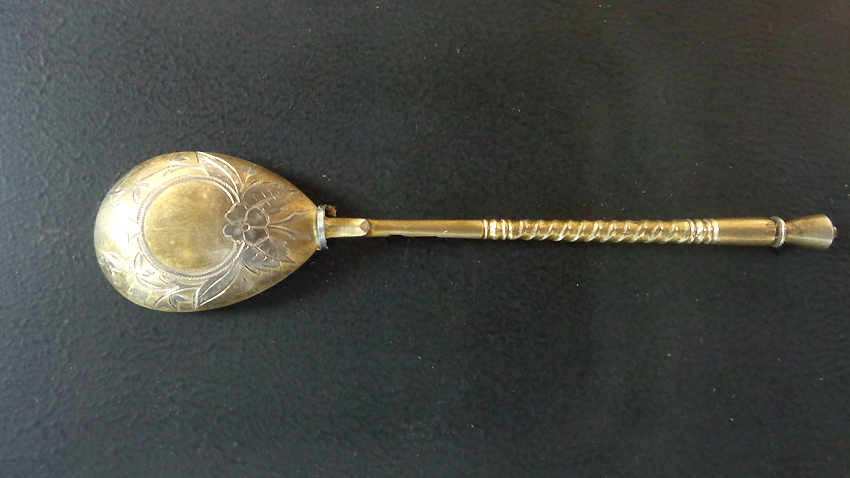 9
9
The 1916: Victories and Challenges exhibition has been unveiled at the National Museum of Military History, dedicated to World War I and more particularly to this country’s participation in the conflict in 1916. The latter entered it in 1915 and joined the Central Powers aka the Quadruple Alliance – Germany, Austria-Hungary, the Ottoman Empire and Bulgaria. In 1918 the country signed a peace treaty. Mrs. Lilia Krivorova, chief expert with the museum brings us more:
“In 1916 the Bulgarian army had great victories, but also several defeats,” she says and adds: “In August 1916 the Bulgarian army and in particular its 2nd Brigade of the 2nd Thracian Infantry Division /27th, 28th Chepinski Infantry Regiments; 28th Stremski Regiment/ held 5 attacks of the enemy near the Vardar riverbanks and at Doyran. The united Anglo-French forces failed to achieve a breakthrough and that was considered a heroic episode of that hot 1916 summer. Both offensives in August – the Battle of Florina and the Struma operation were also successful for the Bulgarians. Thus the initiative of the First and Second Armies improved the overall operational environment across the Southern Front.
 We must mention of course the bloody Battle of Kaymakchalan here. In the period 12 – 30 September the 11th Infantry Regiment of Sliven and separate units of the 24th Infantry Regiment were involved into a most severe fight which took the lives of no less than 2,000 officers and soldiers. The battle was so fierce that the peak of Prophet Ilia /Kaymakchalan/, the highest one of the Nidje Mountain at the Greek – Macedonian border lost 10 m of its height due to the 24/7 heavy artillery fire. Some of the survivors lost their mind or hearing, or both. Few made it and the Bulgarian army had to retreat while the peak of Prophet Ilia was captured by the Serbian Drinska Division.”
We must mention of course the bloody Battle of Kaymakchalan here. In the period 12 – 30 September the 11th Infantry Regiment of Sliven and separate units of the 24th Infantry Regiment were involved into a most severe fight which took the lives of no less than 2,000 officers and soldiers. The battle was so fierce that the peak of Prophet Ilia /Kaymakchalan/, the highest one of the Nidje Mountain at the Greek – Macedonian border lost 10 m of its height due to the 24/7 heavy artillery fire. Some of the survivors lost their mind or hearing, or both. Few made it and the Bulgarian army had to retreat while the peak of Prophet Ilia was captured by the Serbian Drinska Division.”
That was one of the failures of the armed forces in 1916. However, on 1 September 1916 the victorious march of the 3rd Army in Dobrudja was launched. Five days later its regiments conquered the modern fortification facility of Tutrakan with a sudden attack. That remained as one of the greatest victories of the Bulgarian army in 1916.
 Then the advance progressed on in Northern Dobrudja. One should bear in mind here that there were two Bulgarian divisions included in the Allied Danube Army which comprised German and Turkish troops. That army advanced and reached the mouth of the Seret River in December.
Then the advance progressed on in Northern Dobrudja. One should bear in mind here that there were two Bulgarian divisions included in the Allied Danube Army which comprised German and Turkish troops. That army advanced and reached the mouth of the Seret River in December.
“In the meantime the enemy managed to push back the Bulgarian forces on the Southern Front at the town of Bitolya and took it,” Mrs. Krivorova says. “The retreat of our troops was one of the major defeats back then after the Battle of Kaymakchalan.”
Were the Bulgarian troops well-equipped and armed over that period and what part of the victories was due to their spirit and self-sacrifice?
 “In 1916 our forces were still well-supplied and armed. However, the victories came mainly as a result of the high spirit of the Bulgarian soldier shown not only during WWI, but also in the previous national unification wars – the Balkan ones. Everywhere across the battlefields our troops demonstrated outstanding bravery and self-sacrifice.”
“In 1916 our forces were still well-supplied and armed. However, the victories came mainly as a result of the high spirit of the Bulgarian soldier shown not only during WWI, but also in the previous national unification wars – the Balkan ones. Everywhere across the battlefields our troops demonstrated outstanding bravery and self-sacrifice.” The exhibition displays around 200 digitalized images of the museum’s photo archive which take the visitor back to the hot summer and gun-smoking autumn of 1916. Belongings of regular troops are placed next to the things of commanding officers of regiments, brigades and divisions which saw field action. For instance, the Holy Communion Spoon of the Second Army’s troops from the Sv. Georgi /St. George/ Church in the village of Tsapari, Bitolya District. The Communion of the soldiers was carried out with it before each battle.
 There are interactive applications on at the exhibition as well. One of them is named Timeline and it tells more about events that happened both along the Southern and the Northern Fronts, as well as across the other fronts of clashes between the Entente and the Central Powers. One of the applications pictures memories of Great War’s contemporaries and participants. The kids can enjoy touchscreens which display interesting stories about Bulgarian commanding officers and the major events during the war.
There are interactive applications on at the exhibition as well. One of them is named Timeline and it tells more about events that happened both along the Southern and the Northern Fronts, as well as across the other fronts of clashes between the Entente and the Central Powers. One of the applications pictures memories of Great War’s contemporaries and participants. The kids can enjoy touchscreens which display interesting stories about Bulgarian commanding officers and the major events during the war.
The exhibition is on until 20 January 2017.
English version: Zhivko Stanchev
October 27 marks the 165th anniversary of the birth of Academician Aleksandar Teodorov-Balan, who was the first theorist of the Bulgarian literary language, phonetics and grammar. He was born was born in 1859 in the village of Kubey, Bessarabia...
Over 150 exhibits from 14 Bulgarian museums will take part in an exhibition entitled "Ancient Thrace and the Classical World" . The exposition will be opened on November 3 at t he Getty Museum in Los Angeles and will continue until March 3, 2025...
On October 26, the Bulgarian Orthodox Church marks the Day of Great Martyr St. Demetrius of Thessaloniki, considered one of the greatest saints. In Bulgaria, his name is also associated with the restoration of the Second Bulgarian..
The Patriarchal Cathedral of St Alexander Nevsky is celebrating its temple feast today. The cathedral, a symbol of the Bulgarian capital, was built "in..

+359 2 9336 661
